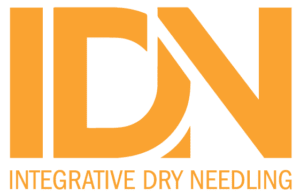Methodological considerations for dry needling trials in medial tibial stress syndrome
J Man Manip Ther. 2025 Dec 2:1-2. doi: 10.1080/10669817.2025.2595629. Online ahead of print. NO ABSTRACT PMID:41328671 | DOI:10.1080/10669817.2025.2595629
Home / My Account / Dry Needling Research
Authors:
Peiru Wang, Fang Xie, Linglin Zhang, Shuang Zhao, Lude Zhu, Shuzhan Shen, Dongsheng Li, Zhou Chen, Rong Xiao, Yan Lu, Xia Lei, Yan Li, Guolong Zhang, Weihui Zeng, Xiuli Wang
Photodiagnosis Photodyn Ther. 2023 Jun;42:103611. doi: 10.1016/j.pdpdt.2023.103611. Epub 2023 May 19.
ABSTRACT
BACKGROUND: Photodynamic therapy (PDT) with 5-aminolevulinic acid (ALA) is a reliable treatment for actinic keratosis (AK), but its effect needs to be enhanced in thick lesions. Plum-blossom needle is a traditional Chinese cost-effective instrument for enhancing the transdermal delivery of ALA. However, whether it could improve the efficacy of AK treatment has not yet been investigated.
OBJECTIVE: To compare the efficacy and safety of plum-blossom needle-assisted PDT in facial AK in the Chinese population.
METHODS: In this multicenter, prospective study, a total of 142 patients with AKs (grades I-III) were randomized into the plum-blossom needle-assisted PDT group (P-PDT) and control PDT group (C-PDT). In the P-PDT group, each AK lesion was tapped vertically by a plum-blossom needle before the application of 10% ALA cream. In the C-PDT group, each lesion was only wiped with regular saline before ALA cream incubation. Then, 3 hours later, all the lesions were irradiated with light-emitting diode (LED) at a wavelength of 630 nm. PDT was performed once every 2 weeks until all lesion patients achieved complete remission or completed six sessions. The efficacy (lesion response) and safety (pain scale and adverse events) in both groups were evaluated before each treatment and at every follow-up visit at 3-month intervals until 12 months.
RESULTS: In the P-PDT and C-PDT groups, the clearance rates for all AK lesions after the first treatment were 57.9% and 48.0%, respectively (P < 0.05). For grade I AK lesions, the clearance rates were 56.5% and 50.4%, respectively (P = 0.34). For grade II AK lesions, the clearance rates were 58.0% and 48.9%, respectively (P = 0.1). For grade III AK lesions, the clearance rates were 59.0% and 44.2%, respectively (P < 0.05). Moreover, grade III AK lesions in the P-PDT group required fewer treatment sessions (P < 0.05). There was no significant difference in the pain score between the two groups (P = 0.752).
CONCLUSION: Plum-blossom needle tapping may enhance the efficacy of ALA-PDT by facilitating ALA delivery in the treatment of AK.
PMID:37211296 | DOI:10.1016/j.pdpdt.2023.103611
J Man Manip Ther. 2025 Dec 2:1-2. doi: 10.1080/10669817.2025.2595629. Online ahead of print. NO ABSTRACT PMID:41328671 | DOI:10.1080/10669817.2025.2595629
J Man Manip Ther. 2025 Nov 29:1-10. doi: 10.1080/10669817.2025.2591677. Online ahead of print. ABSTRACT OBJECTIVE: Clinical guidelines recommend combining exercise with other
J Bodyw Mov Ther. 2025 Dec;45:493-501. doi: 10.1016/j.jbmt.2025.08.015. Epub 2025 Aug 31. ABSTRACT OBJECTIVE: Myofascial pain syndrome (MPS) is a chronic musculoskeletal
© Integrative Dry Needling 2025 | All rights reserved | Designed by Weblink
any IDN Course!
*Valid for new registrations only and can not be combined with other discount codes. Offer Expires: 7/7/2024

Not sure which course is right for you? No problem – we created an intuitive process to help!